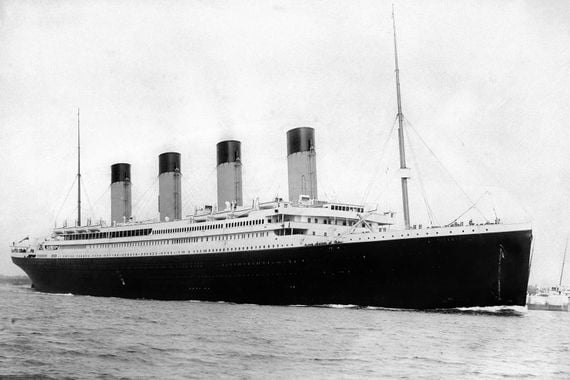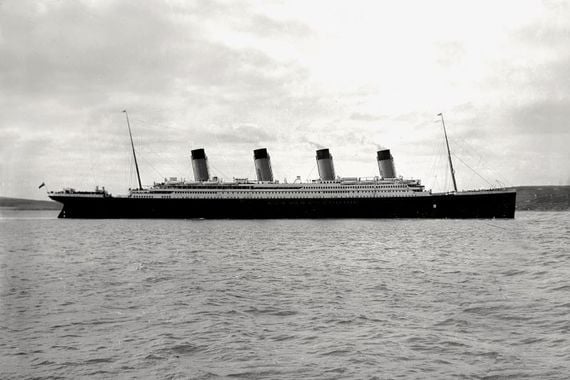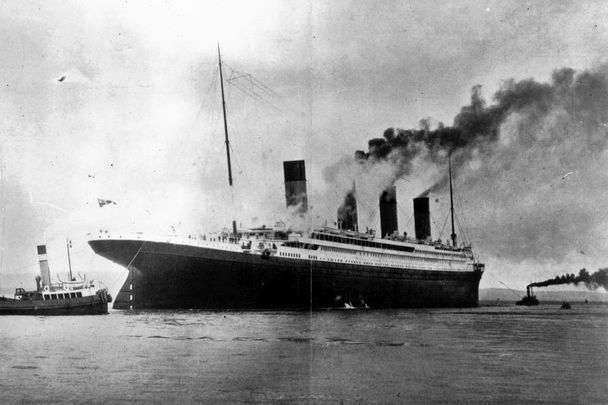A 2019 Channel 5 documentary investigates the series of mistakes that led to the sinking of the Belfast-built Titanic during its maiden voyage in April 1912.
No one mistake was to blame for the disaster, according to the Channel 5 documentary “10 Mistakes That Sank the Titanic." Instead, it was a number of factors that led to the tragedy.
The Daily Mail reports on some of the fatal flaws that are featured in the "10 Mistakes That Sank the Titanic" documentary which debuted in 2019, more than 100 years after the disaster.
Before the famous ship left Southampton on April 10, 1912, there was a reordering of officers. Second Officer David Blair was switched for Henry Wilde from the RMS Olympic. When Blair left the Titanic, he forgot to leave the key to the cabin, which would have given officers access to a binoculars case.
Simon Mills, the owner of the HMS Britannic wreck, said: “The best way of spotting an iceberg was basically using your natural eyesight as wide as possible on the horizon.
“When you saw something ahead, then you would identify it with the binoculars. Interestingly enough the lack of binoculars wasn't a major concern on the bridge.
“They still believed they would see a berg in plenty of time to avoid it. There were no binoculars available in the crow's nest that night.”
The 80-minute documentary also reveals how passengers opened their portholes to see what was going on after the collision. The portholes were left open as panicked passengers went on deck for evacuation.

Titanic, pictured here in Southampton. (Public Domain)
Titanic historian Tim Maltin, a world-leading expert on the ship, said: “After the collision, the Titanic came to a stop and people wondered what had happened.
“So their natural reaction was to open the portholes and have a look. Then, when they went up to the lifeboats, they left the portholes open.
“As Titanic's passenger accommodation began to dip under the Atlantic, the open portholes meant that water flooded in at a much greater rate.
“In fact, 12 open portholes would have doubled the iceberg damage to Titanic – of course, there were hundreds of portholes in Titanic's bow.”
Another problem that occurred was that fixing rivets into the ship’s bows could only be done by hand because the bow was too big to fit into the Harland and Wolff shipyard in Belfast.
High-quality rivets could only be inserted using a large hydraulic machine - something not possible when only manual riveting crews could be used.
Therefore, the plates had iron rivets, which are not as versatile as steel and produce the by-product of slag, making them more prone to fracture on impact in cold temperatures.
When the Titanic hit the iceberg, the impact hit the weakest sections along the seams, breaking open and flooding.

Titanic in Cobh Harbour in Ireland. (Public Domain)
The documentary also tells how the ship was going much faster than the average need of 18 knots to arrive in New York on April 17. A slower speed may have saved the Titanic from disaster.
Mills said: “The simple fact is that she was going too fast - 22 knots in an ice field. Had she been going slower, she may have missed the berg, everything else would have been academic.”
Titanic captain Edward Smith had a reputation for speed.
According to historian Maltin: “Captain Smith was the White Star Line's best captain.
“He was known as the millionaire's captain - and that's because people loved traveling with him. He was sophisticated, he looked the part.
“He really liked going fast as well. He liked to get his passengers there as fast as possible, and let's face it, these passengers wanted to get there on time. They knew, come hell or high water, Smith would get them there.”
*Originally published in 2019, last updated in April 2022.

Love Irish history? Share your favorite stories with other history buffs in the IrishCentral History Facebook group.




Comments